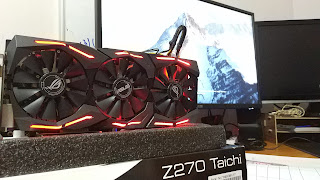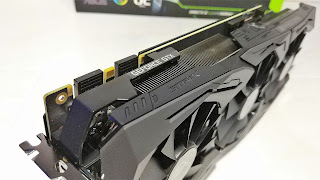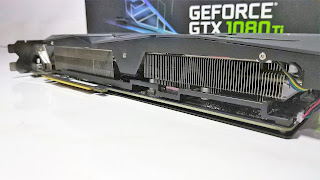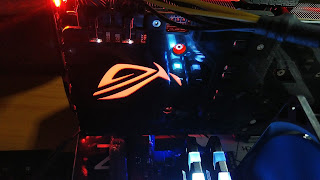Introduction
NVIDIA has been dominating the whole gaming graphics card scene with their continuous release of high end graphics cards. It seems that all the hard work in the Pascal graphics architecture has really paid off, as they were still able to continue churning out even better performing graphics card on the same architecture almost a year later. As expected, the Nvidia GTX 1080Ti was finally launched last week, taking away the flagship crown from the GTX 1080 from the GTX 10 series cards.
Some gamers will never settle for anything but the best, but how much improvements are there between these two monstrous graphics card? Is it actually worth to upgrade from a GTX 1080 to GTX 1080Ti? In this review, we put both graphics card to the test to provide us with some answers.
Specification Differences and expectations
|
|
GeForce GTX 1080 Ti
|
GeForce GTX 1080
|
|
Founder’s
Edition |
||
|
NVIDIA CUDA Cores
|
3584
|
2560
|
|
Boost Clock
|
1582MHz
|
1733MHz
|
|
Memory Speed
|
11Gbps
|
10Gbps
|
|
VRAM
|
11GB GDDR5X
|
8GB GDDR5X
|
|
Memory Bandwidth
|
484GB/s
|
320GB/s
|
|
AIB
Specs (ASUS) |
STRIX
1080Ti OC |
STRIX
1080 OC |
|
Boost Clock
|
OC Mode – 1708MHz
Gaming Mode – 1683MHz |
Gaming Mode – 1898MHz
|
The GTX 1080 Ti packs 40% more CUDA cores than the GTX 1080. Of course, in the gaming graphics environment, more compute cores essentially means higher performance and better framerates. However, in order to contain the whole graphics card within power limits and to ensure stability, the GTX 1080 Ti has to be clocked at a lower frequency.
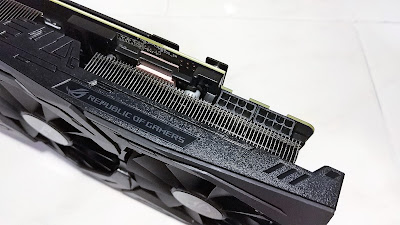 |
| The GTX 1080Ti will have a higher power requirement 2 x 8pins instead of 1 x 6 pin + 1 x 8pin |
The GTX 1080 Ti is also equipped with a whopping 11GB of dedicated GDDR5X video memory. This additional memory should come in handy when gaming in ultra high definitions or when using the graphics unit to compute highly parallel workloads.
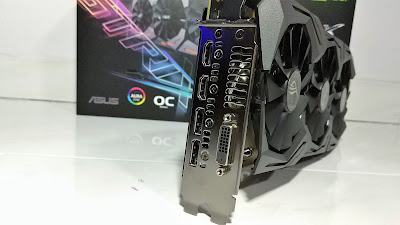 |
| I/O – 2 x HDMI, 2 x Display Port, 1 x DVI |
These core differences in the specifications of the new GTX 1080 Ti as compared to the GTX 1080 should give us some expectations in terms of performance. Can the Pascal architecture hold up to the increased needs for parallelism with the large number of CUDA cores, allowing the performance of the whole graphics card to scale accordingly? Let’s take a closer look at the ASUS Republic of Gamers STRIX GTX 1080 Ti and put it to the tests.
ASUS ROG STRIX GTX 1080 Ti OC
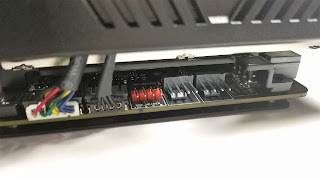 |
| 1 x RGB connector and 2 x 4pin fan headers |
 |
| Voltage readouts : For overclockers to know exact voltage readings with an multimeter |
ASUS AURA and GPU TWEAK II Software
Performance Benchmarks
Test System
- Intel Core i7 6770K @ 4GHz Stock
- Geil EVO X DDR4 3200MHz XMP
- ASRock Z270 TAICHI Motherboard
- FSP HEXA+ 550W
- ASUS PB279Q Monitor
- ASUS ROG STRIX GTX 1080 Ti Gaming Mode – 1683MHz
- ASUS ROG STRIX GTX 1080 Ti OC Mode – 1708MHz
- ASUS ROG STRIX GTX 1080 – Gaming Mode – 1898MHz
Conclusion
The performance gains with having more CUDA cores on the GTX 1080 Ti was apparent. As seen from the benchmark tests, the GTX 1080 Ti was able to crunch out quite a fair bit of additional frames per second all the games. The differences were more significant in the newer games such as Battlefield 1, Mass Effect Andromeda and Deus EX Mankind Divided, where there was at least 15% more FPS recorded. It could be that these games were able to better utilize the increased number of CUDA cores with the DirectX 12 features. This hypothesis is also supported with the 3DMark Time Spy DirectX 12 benchmark, where score differences were comparatively large between the two cards.
Back to the question : Is it worth it to upgrade from a GTX 1080 to a GTX 1080 Ti? If you are playing games on 4K resolutions, YES! The higher specifications on the GTX 1080 Ti allowed much higher frame rates for a smoother 4K gameplay and we feel that the upgrade will be justified. However, if you are gaming on other lower resolutions, the GTX 1080 could already be sufficient for most of your games. Of course, it still boils down to if you are able to afford this new graphics card.
We will recommend that gamers opt for the GTX 1080 Ti from Nvidia’s AIB partners, such as ASUS, MSI, Gigabyte etc. Manufacturers will usually factory overclock the graphics card, reducing the GPU core frequency between the GTX 1080 Ti and GTX 1080. These overclocked cards are guaranteed to perform better than the Founder’s Edition, and will stay cooler and be more reliable.
The ASUS ROG STRIX GTX 1080 Ti retails at 1399SGD, and is currently available at major computer component hardware retailers in Sim Lim Square.
For the LATEST tech updates,
FOLLOW us on our Twitter
LIKE us on our FaceBook
SUBSCRIBE to us on our YouTube Channel!



